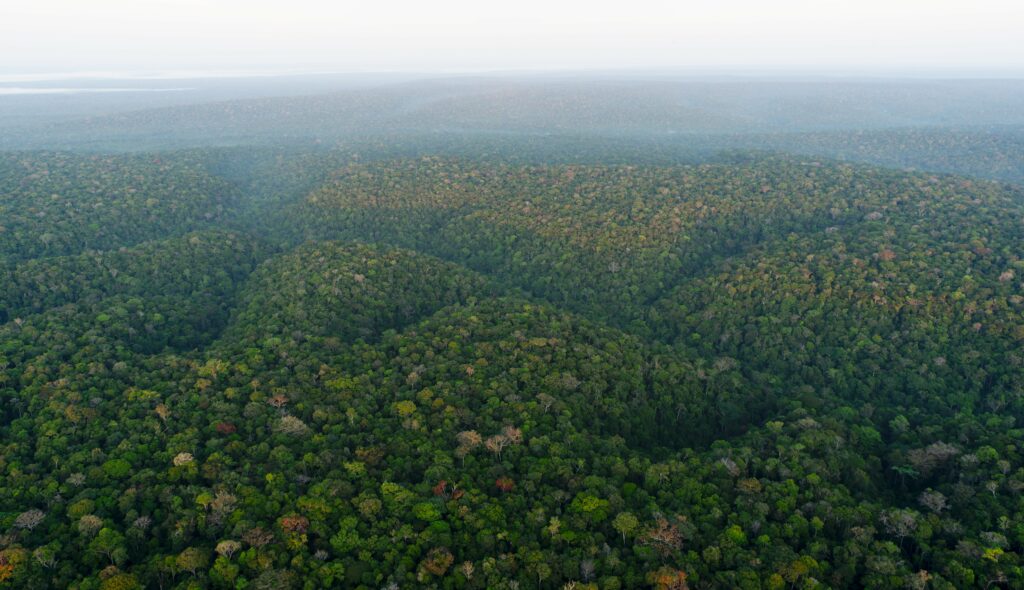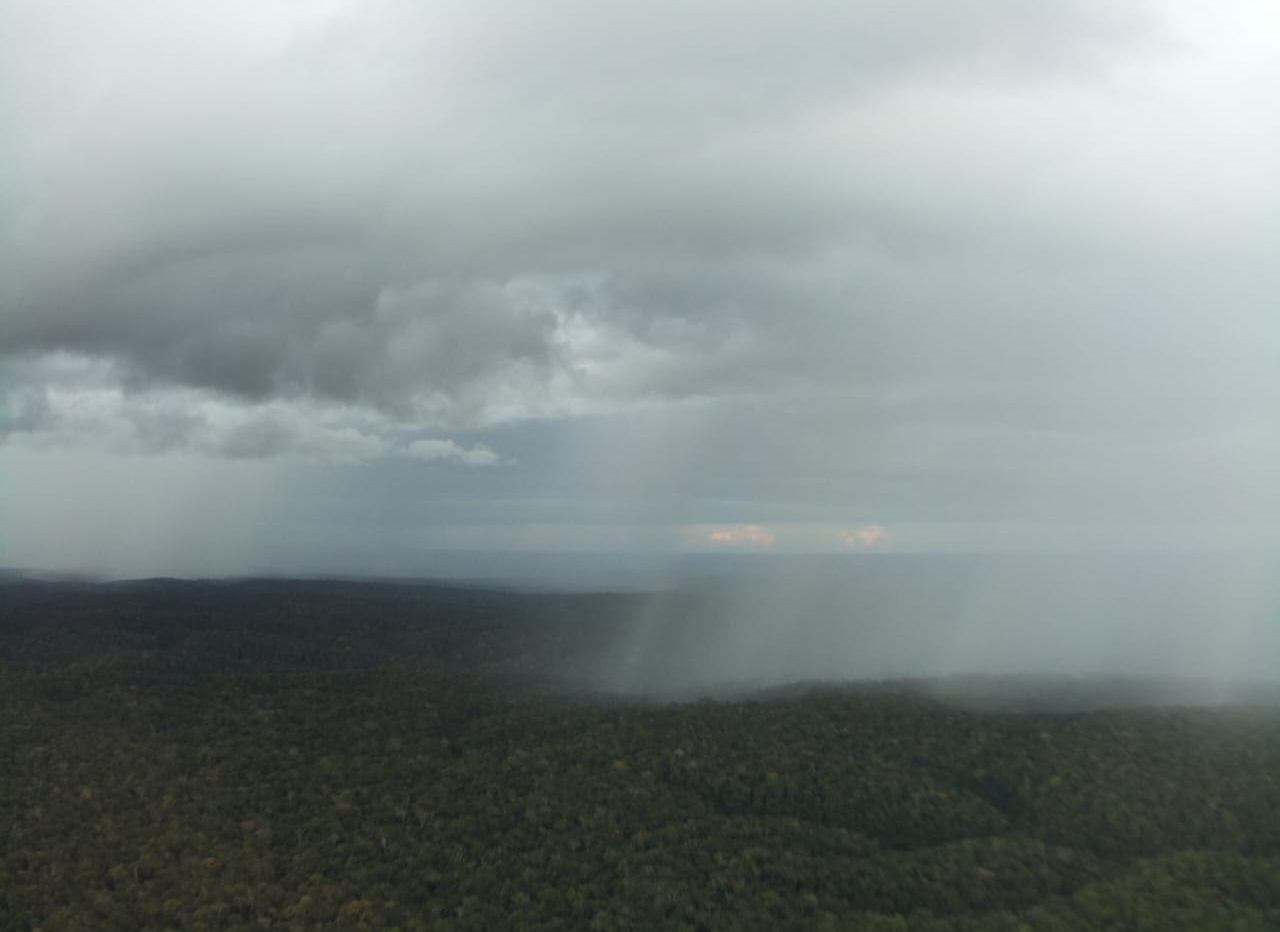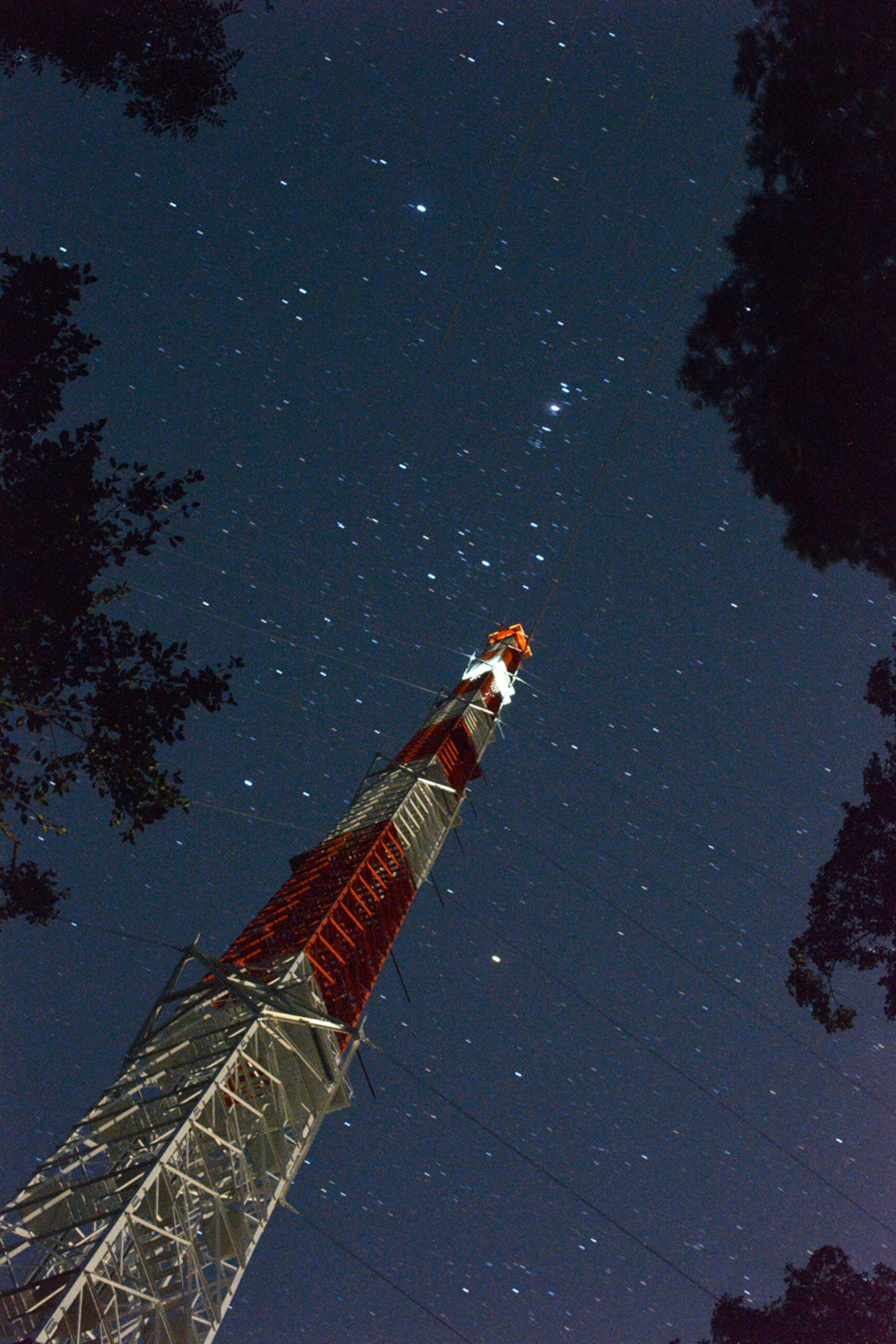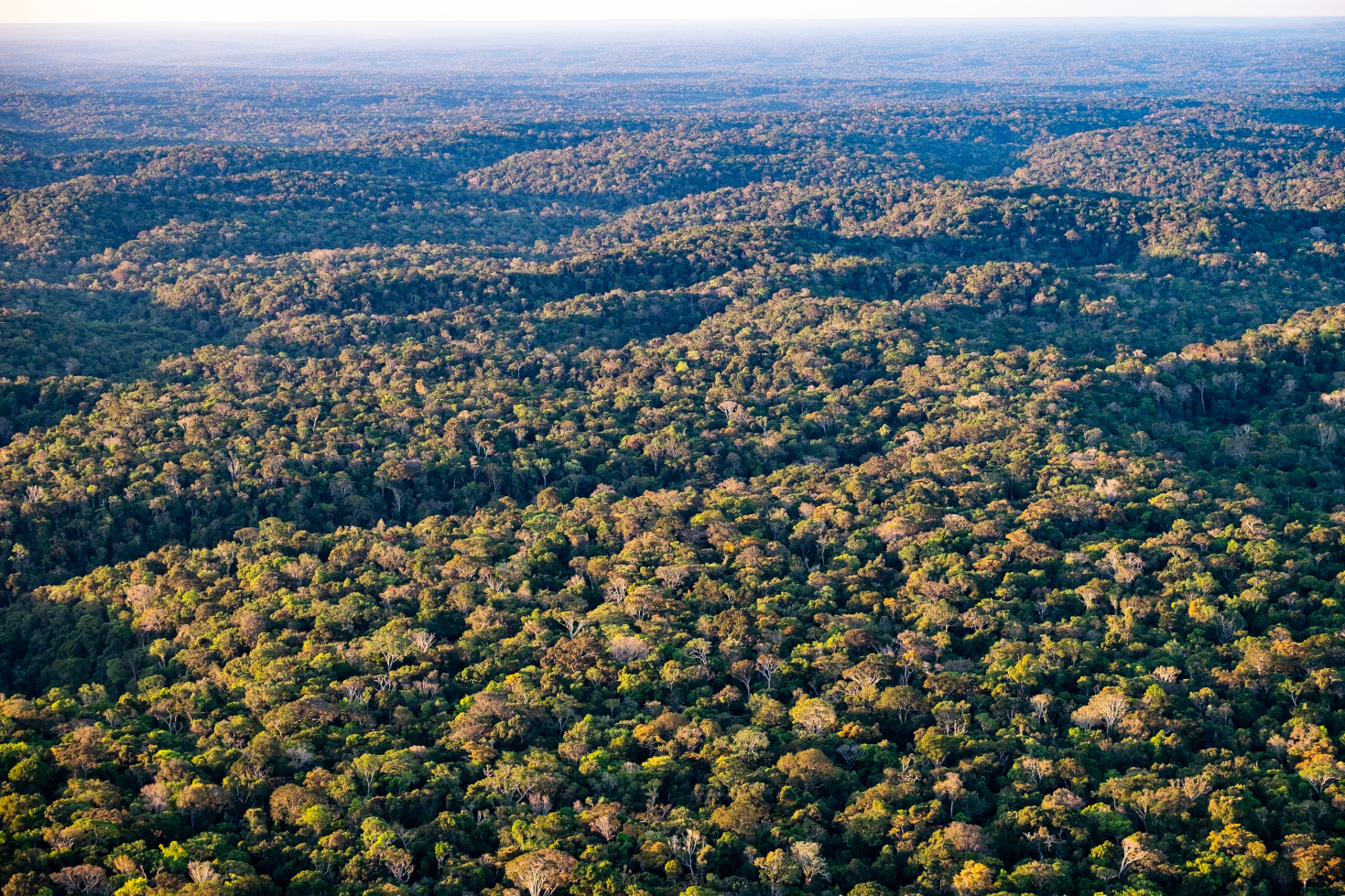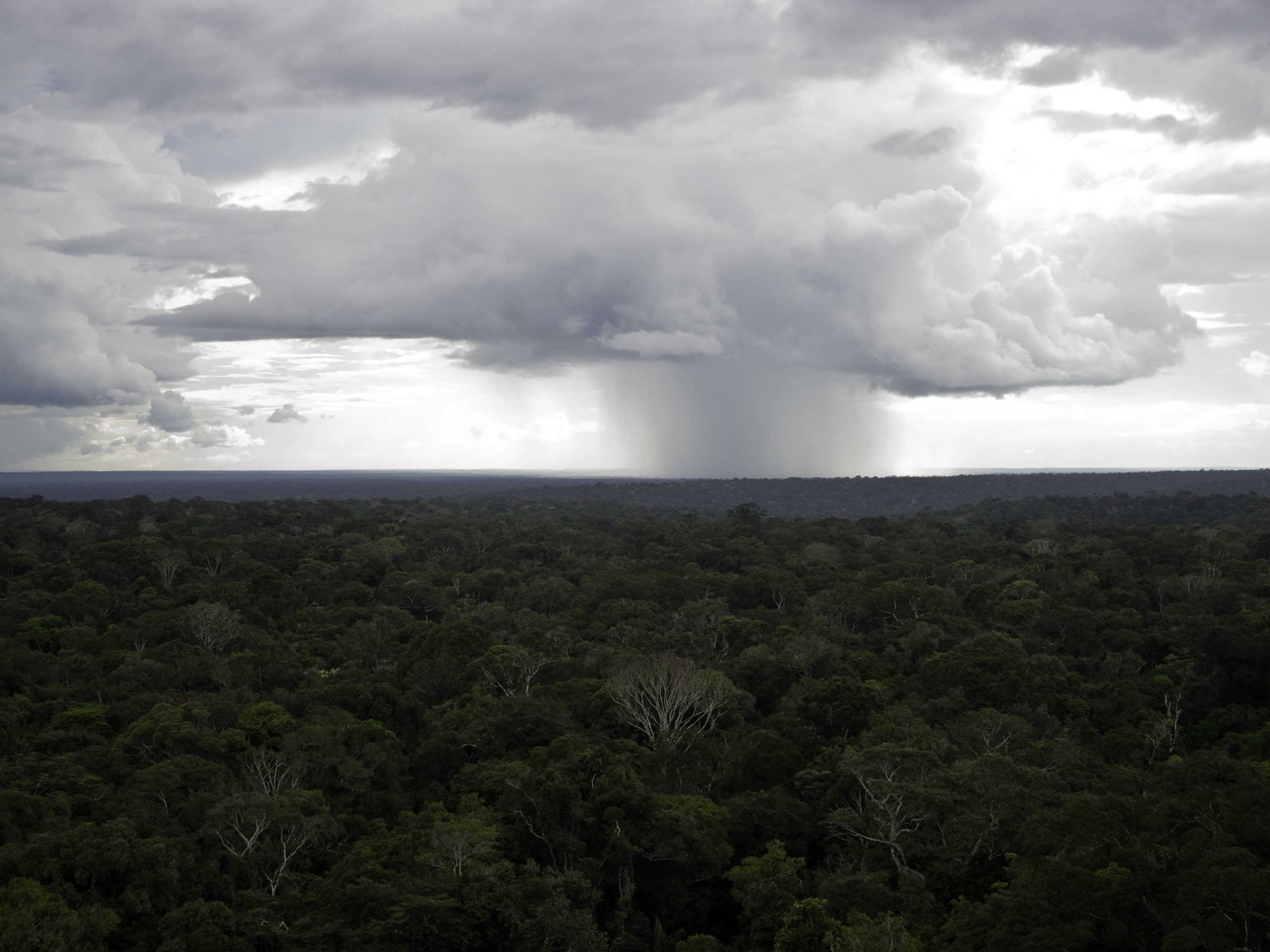Forests have a profound influence on the atmospheric flow above them. This influence manifests itself in the formation of a roughness sublayer above canopies. The roughness sublayer affects a plethora of physical, chemical, and biological processes. A better understanding of the wind velocity field above tall, forested canopies might also lead to a better handshake between the forest and the atmosphere in numerical weather predictions and Earth Systems Models.
In a new study, Luca Mortarini and his colleagues introduce a novel approach to the study of the roughness sublayer, using a cospectral budget model. Its originality lies in not considering the mixing layer analogy to parameterize the turbulence statistics. Instead, it relates them to the different scales of the wind velocity spectrum without making any assumption on the property of the flow. It is a shift of perspective that also naturally takes into account eventual terrain effects. This might come in handy at the ATTO site, where scientists have just begun to explore the influence of orography on forest dynamics.
A side result of the paper is a new formulation for the turbulent eddy viscosity. This quantity is crucial and widely used to estimate fluxes. Better quantification of the eddy viscosity traduces in a better estimation of the fluxes.
In this study, only neutral stability conditions and wind velocity statistics were considered. However, a new development for temperature and scalars might be on the way.
Mortarini et al. published the study “Adjustments to the law of the wall above an Amazon forest explained by a spectral link” Open Access in the journal Physics of Fluids.
Similar articles
Direct measurements of OH radicals are rare and difficult to achieve. However, since they react with BVOCs, Ringsdorf et al. inferred them from isoprene measurements at ATTO. To do so, they applied a technique called ‘Dynamical Time Warping’ from the field of speech recognition. Akima Ringsdorf et al. published the study “Inferring the diurnal variability of OH radical concentrations over the Amazon from BVOC measurements” Open Access in Nature Scientific Reports.
In a new study, Anne Mendonça, Cléo Quaresma, Daniel Marra and their co-authors analyzed different turbulence regimes at the ZF2 site as part of the ATTO-INVENTA project. They also investigated how turbulence is connected to the occurrence of downdrafts and extreme wind gusts, that might lead to tree mortality.
Eiky Moraes, Cléo Dias-Júnior and their colleagues wanted to find out if the local topography at the ATTO influenced the atmospheric movements. In particular, they were interested in the effect that topography has on the formation of gravity waves. Comparing two simulations, one with and one without topography, revealed some important differences in the dynamics and chemistry of the atmosphere.
Only when the air inside of the forest canopy mixes with the air above can there be exchange. The physical movement of the air, its turbulence, determine how well these two layers of air, the one inside the forest canopy and the one above, mix. Daniela Cava, Luca Mortarini, Cleo Quaresma and their colleagues set out to address some of these questions with two new studies that they conducted at ATTO. They wanted to define the different regimes of atmospheric turbulence or stability (Part 1) and describe the spatial and temporal scales of turbulent structures (Part 2).
Polari Corrêa and his co-authors analyzed the atmospheric dynamics in and above the forest canopy during one particular night at ATTO. Those conditions changed throughout the night. Turbulence was followed by the formation of a gravity wave and a low-level jet. It was likely formed due to the breeze from the Uatumã River and the hilly terrain. The study highlights the complex dynamics and mechanisms in the atmosphere above a dense forest.
Chamecki and his co-authors analyzed if the gentle topography underneath the Amazon rainforest impacts atmospheric turbulence. They published their results Open Access in the Journal of the Atmospheric Science.
Convective storms often occur in the tropics and have the potential to disturb the lower part of the atmosphere. They might even improve the venting of trace gases out of the forest canopy into the atmosphere above. To better understand these processes, Maurício Oliveira and co-authors used the infrastructure at ATTO to study storm outflows during nighttime. They published the results in a new paper in the Open Access Journal Atmospheric Chemistry and Physics.
The Amazon rainforest interacts with the atmosphere by exchanging many substances. Many of these, such as carbon dioxide, methane, ozone, and organic compounds, are produced by the vegetation. They are very influential in both the regional and global climates. Until now, the estimates of their emission and absorption rates are based on classical theories. But those were developed over relatively short vegetation and are valid for the so-called “inertial sublayer.”
Aquino et al. published a new study in Agricultural and Forest Meteorology about the characteristics of turbulence within the forest canopy at two Amazonian sites. They found that the air layer close to ground is largly decouples from the air layer in the upper canopy and above.


